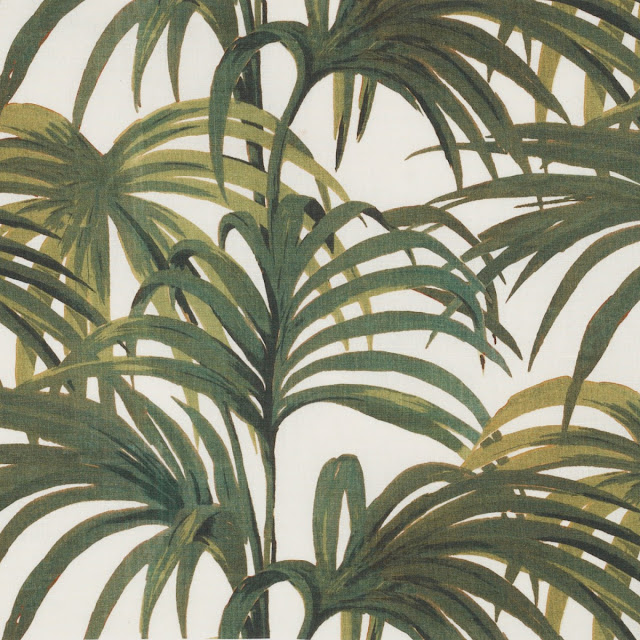Set your scene with a fabulous screen. Whether you wish conceal or
reveal, add a little partition to your life with these scene stealers.
Prepare to divide and conquer...
A six-fold paper screen painted in ink and colour on a gold ground with ajisai (hydrangea)
Japan, Edo period,18th century
Hello Saturday! What a perfect day for
Curiosity Shop shopping. First stop, Gregg Baker Asian Art on Kensington Church St. They carry the largest stock of Japanese screens in Europe so if I'm to find the sumptuous, gold screen to sling my silk robe over then this is the place to be!
Screens
have historically evoked mystery. They can be used practically to
divide a large space or to conceal their owner while dressing
or undressing. Folding screens in Japan functioned both as a type of
furnishing and as decoration. Screens served to divide large open spaces
into more intimate and private areas, often for the purposes of
dressing or sleeping. The glimmering gold-leaf surfaces
characteristic of folding screens reflected ambient light and enlivened
the space with the pictorial scenes upon them. In outdoor settings,
screens could be arranged to function like portable walls, demarcating
space and shielding revelers from prying eyes.
James McNeill Whistler, La Princesse du Pays La Porcelaine, -
In
the eighteenth century screens came to Europe from the East, becoming a
glamorous status symbol indicating the vogue for an
Eastern aesthetic at this time. Only the upper echelons of society possessed these
dramatic space dividers.
James Tissot, Young Women Looking at Japanese Objects, c.1869-1870
In the nineteenth century, Japonisme, or a love of all things Japanese, was influencing aesthetic design from painters to furniture makers. Screens became more attainable from possessions of just the very rich, to objects for the aspiring middle classes.
Morning Glories, Suzuki Kiitsu (Japanese, 1796–1858)
The Metropolitan Museum of Art, New York
This beautiful Japanese screen depicts morning glory flowers bursting across a gold-leaf surface. They rise and fall over the background as if suspended by nothing - denying any sense of space or a natural context from which they may have grown. This combination of naturalism and abstraction often appears in Japanese screens of this period and in this screen, the contrast is particularly marked.
A pair of six-fold paper screens, Japan, Edo Period (18th century)
Gregg Baker Asian Art
This pair of screens depict shkikishi or poem slips depicitng Sanjūrokusen (thirty six Immortal poets) and calligraphy above morning glory and clematis blossoms.
The occurence of the thirty six poets as a painting is based on an anthology of selected poems by Hujiwara no Kintō (996-1041). Here, each line of poem forms a patterned sequence of geometric strips which reverberate rhythmically across the surface.
A two-fold paper screen painted in ink on a gold ground with Shochikubai (Three Friends of Winter), signed Bunchō hitsu; sealed Ga gakusai
Japan, Edo period (19th century)
Gregg Baker Asian Art
Shochikubai, the Three Friends of Winter is a motif of Chinese origin combining pine, bamboo and plum to symbolise winter and long life. The monochromatic black in this image emphasises winters bleakness in colour while the tonal variance of this one shade accentuates this visual coldness, contributing to the seasonal theme.
A six-fold paper screen painted in ink and colour on a gold ground with six individual botan (peony)
Japan, Edo period (18th century)
Gregg Baker Asian Art
My favourite of all flowers depicted in Japanese art, the peony incites a heady Eastern romanticism with its full petals and sweet scent.
A six-fold paper screen painted in ink and colour on a gold ground with summer flowers including botan (peony) in full bloom, satsuki (azalea) and fuji (wisteria) hanging from a bamboo trellis on the banks of a river amongst golden clouds.
Japan, Edo period (18th century)
Gregg Baker Asian Art
Painted with
delicate precision on Edo period paper, a landscape of flowers provides a setting for opium dreams. Follow the silk road down a peony edged river toward golden clouds: you couldn't find a better scene than this to evoke the screens role of mystery and romance.
A six-panel Japanese screen, painted on paper of gold and silver mountain with clouds above.
JAN Fine Art
In many layers of gold, an abstracted landscape demonstrates the very interesting combination of figuration and stylisation at play on Japanese screens.
JAN Fine Art
In many layers of gold, an abstracted landscape demonstrates the very interesting combination of figuration and stylisation at play on Japanese screens.
A pair of two-fold paper screens painted in ink on a buff ground with abstract calligraphy which loosely translates as, 'From Morning to Evening (let your spirit) Soar'
Sealed Teruko
Japan, Meiji period (19th - 20th century)
Gregg Baker Asian Art
A Six-Fold Screen, Heisei Period (1990-1993)
Lot 127, sale 7316, 07 November 2012, Christie's, South Kensington
This very large and dramatic modern screen sold at Christie's in November last year for £7,500. Considering its size (212cm x 380.5cm) and hence the quantity of gold-leaf, the price was surprisingly low. It is a multi-functional piece, acting as both functional furniture and contemporary art.
The bold contrast of contemporary calligraphy scribbled and splashed across a bright gold background enables this screen to become a striking and dramatic piece of art. Such drama brings an element of magic to an interior space. A screens ability to divide and change a space becomes a theatrical act. It sets a scene that is dramatic and intriguing for both the screens role in a room and in the subject matter it may depict. This heady aura of mystery and intrigue allows fiction to overtake reality: who or what might reside behind the screen. As opium dreams seep in and jasmine nights take over, the voyeur steps in to play.
































